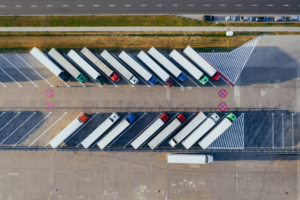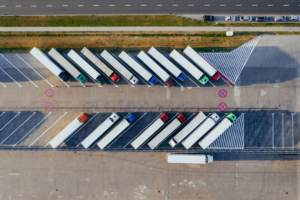Register Your Car: Step-by-Step California DMV Guide
Looking to register your car in California? This comprehensive guide walks you through the process, from understanding key requirements to securing your license plate. We break down essential steps li…….

Looking to register your car in California? This comprehensive guide walks you through the process, from understanding key requirements to securing your license plate. We break down essential steps like gathering vital documents, undergoing DMV VIN verification, and completing online registration (where eligible). By following these straightforward instructions, you’ll be on your way to a smooth, efficient car registration experience in California.
- Understand California Car Registration Requirements
- Gather Necessary Documents for Vehicle Registration
- Visit the DMV for VIN Verification and Registration
- Complete Online Registration Process (If Eligible)
- Pay Registration Fees and Receive Your License Plate
Understand California Car Registration Requirements

Before registering your car in California, it’s crucial to understand the state’s specific requirements for car registration. The California Department of Motor Vehicles (DMV) mandates that all vehicles operated within the state be properly registered and bear current license plates. One key step in this process is the DMV VIN verification, which ensures that your vehicle matches the information on record with its unique Vehicle Identification Number (VIN). This process involves verifying the vehicle’s make, model, year, and other details to ensure accuracy.
Additionally, California requires owners to present valid documentation such as proof of insurance, a completed application form, and any necessary fees. For convenience, many residents opt for mobile VIN verification services that can inspect your car remotely, streamlining the registration process. This approach, offered by mobile vin verifiers, is particularly popular among those who prefer not to visit a DMV office. Regardless of the method chosen, ensuring your car meets all these requirements is essential for a smooth and successful registration.
Gather Necessary Documents for Vehicle Registration

Before you start the registration process, ensure you have all the required documents ready. The California Department of Motor Vehicles (DMV) will need specific details and proofs to verify your vehicle’s identity and ownership. One crucial step is the DMV VIN verification, where the unique Vehicle Identification Number (VIN) is cross-checked for accuracy and security purposes. This can be done online or at a local DMV office.
Gathering these documents is essential, including proof of ownership, such as a title or bill of sale, valid identification like a driver’s license, and insurance paperwork. Additionally, a vin inspection using a mobile vin verifier (or similar service) can be helpful to ensure all information matches accurately, making the registration process smoother and faster.
Visit the DMV for VIN Verification and Registration

After gathering all the necessary documents, it’s time to visit your local DMV for VIN (Vehicle Identification Number) verification and registration. The process typically begins with a stop at the DMV where you’ll need to present your proof of ownership, insurance, and identification. A key step in this process is having your vehicle’s VIN inspected by a certified inspector or using a mobile vin verifier. This ensures that the VIN on your car matches the one listed on the registration documents.
Once your VIN is verified, you can proceed with the registration process. The DMV will check for any outstanding fees, fines, or recalls before issuing your vehicle’s registration papers. It’s important to note that certain types of vehicles may have additional requirements, such as emissions tests or safety inspections. Using a mobile vin verification service can streamline this process by providing instant results and ensuring that everything is in order before you leave the DMV.
Complete Online Registration Process (If Eligible)

If you’re eligible to complete your car registration online, it’s a straightforward process that can be done from the comfort of your home. Start by visiting the California DMV website and selecting the option for vehicle registration. You’ll need certain documents, including proof of identity, ownership, insurance, and a valid registration (if transferring a title). The key step in this digital journey is the DMV VIN verification, ensuring your vehicle’s identification number is accurate and matches the records.
This process often involves using a mobile vin inspection or a mobile vin verifier to check the VIN against state databases. Once verified, you can input this information into the online form. After completing all required fields, submit your application and make the necessary payment. The DMV will then process your registration, providing instructions for picking up your plates and registration card, typically at a local DMV field office.
Pay Registration Fees and Receive Your License Plate

After completing the registration application and providing all necessary documents, it’s time to settle the fees. In California, car registration costs vary depending on the type and age of your vehicle. You’ll need to pay a base fee along with any applicable taxes and surcharges. The California Department of Motor Vehicles (DMV) offers several payment methods, including cash, credit card, or check. Once you’ve finalized the payment, the DMV will conduct a DMV VIN verification, ensuring the vehicle’s information matches the provided details.
Following successful payment, you’ll receive your license plate. In some cases, especially when utilizing a mobile vin inspection service, you might be able to get your plates immediately during your visit. Otherwise, the DMV will mail them to you. Always keep your registration and license plate documents in your vehicle for easy access during drives.
Registering a car in California involves understanding specific requirements, gathering essential documents, and completing key steps like DMV VIN verification. By following this process—which may also include an online registration option for eligible individuals—you’ll ensure your vehicle is legally recognized on California’s roads. Remember to pay the necessary fees and obtain your license plate to finalize the registration process.







